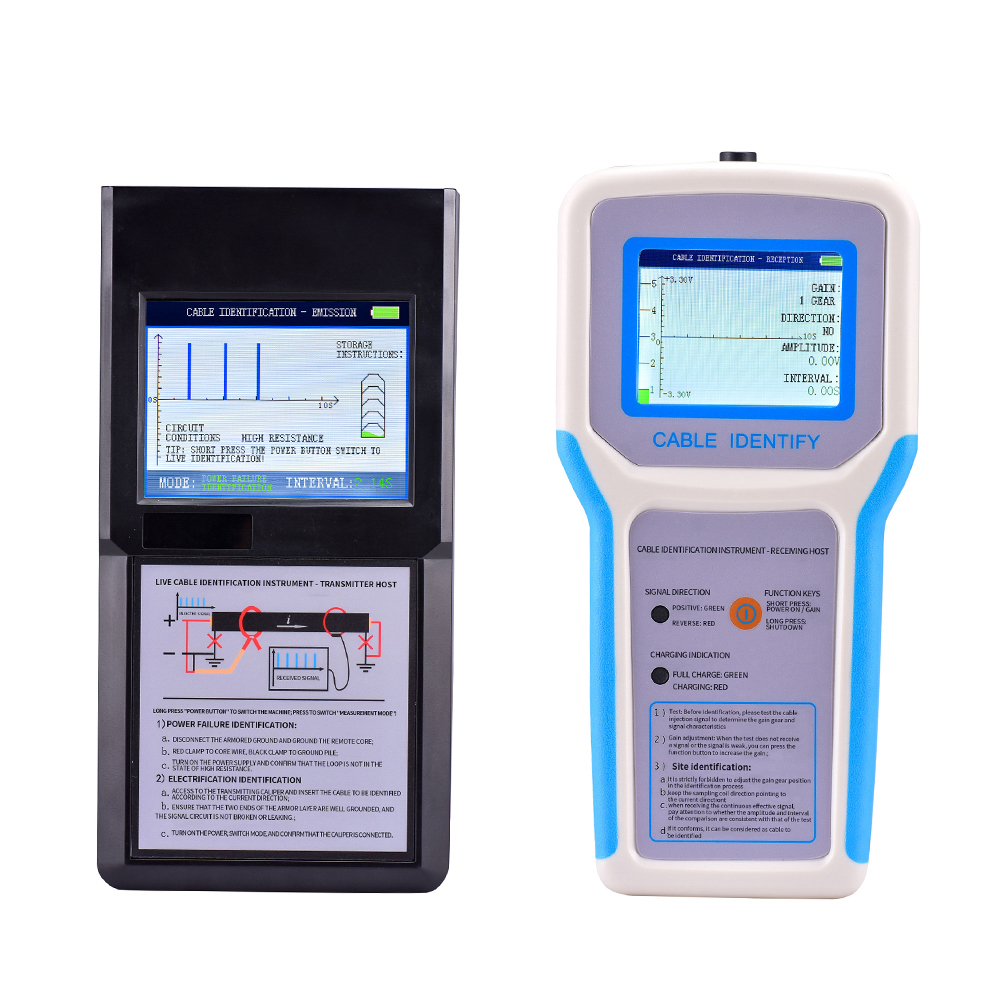The live cable identification deviceunder UHV power can help many power workers conduct various power tests more conveniently.

Nowadays, the development of the power system has become increasingly complete, and the demand for cables in the market is also constantly increasing. Today, the editor will mainly talk about three solutions for using a live cable identification device to determine whether a cable is live, including the path finding and identification of live cables, as well as the path finding and identification of cables operating at 50Hz. If you are also interested in this area, continue reading.
1、 Can the problem of identifying live cables be solved?
The answer is affirmative. Routing and identification of live cables, as well as routing and identification of cables operating at 50Hz.
These are the three solutions for determining whether a cable is live using a live cable identification device.
Routing of live cables: By clamping the transmitter onto the cable with coupling clamps, the transmitter's transmission signal can be coupled to the cable (whether the cable is in operation or in a power outage). We can find the underground direction of the cable and locate its origin through the cable identification receiver.
Identification of live cables: The transmitter is clamped onto the cable using a transmission clamp, and the receiver is connected to the exposed part of the cable at the other end using a receiving clamp. At this point, the signal can be used to determine which one is the signal cable. (This method requires an additional specially designed receiver clamp).
Detecting 50Hz signals: It has the function of detecting 50Hz signals, which greatly enhances the judgment function. We can use the receiver to judge the cables with 50Hz signals in the cable group one by one (cables with 50Hz signals may not necessarily be running cables).
By combining the above three methods, we can easily distinguish between live and non live cables.
2、 Why can't a passive live cable identification device be used to determine whether a cable is a running cable?
The main reasons are as follows:
Everyone knows that the principle of the live cable identification device is that when a 50Hz current flows through the running cable, a magnetic field will be generated alternately along the running cable. By detecting the alternating magnetic field, the live cable can be detected. But when the following situations occur, misjudgment will occur:
If there is voltage and no load on the cable during operation, there will be no current flowing through the cable, and the magnetic field will not be detected. It is believed to be an uncharged cable, which can easily lead to misjudgment.
If the cable is not running, but if it runs in parallel with other running cables, induced current will be generated, and at the same time, a magnetic field will be generated by the induced current. At this time, the cable identification instrument will also have an indication, and a misjudgment will occur.
If there are multiple cables in the cable trench, they will all generate a magnetic field. At this time, the entire area will have a magnetic field generated by a 50HZ current, making it impossible to distinguish. Easy to cause misjudgment. In the event of misjudgment, it is highly likely to cause personal injury.



















